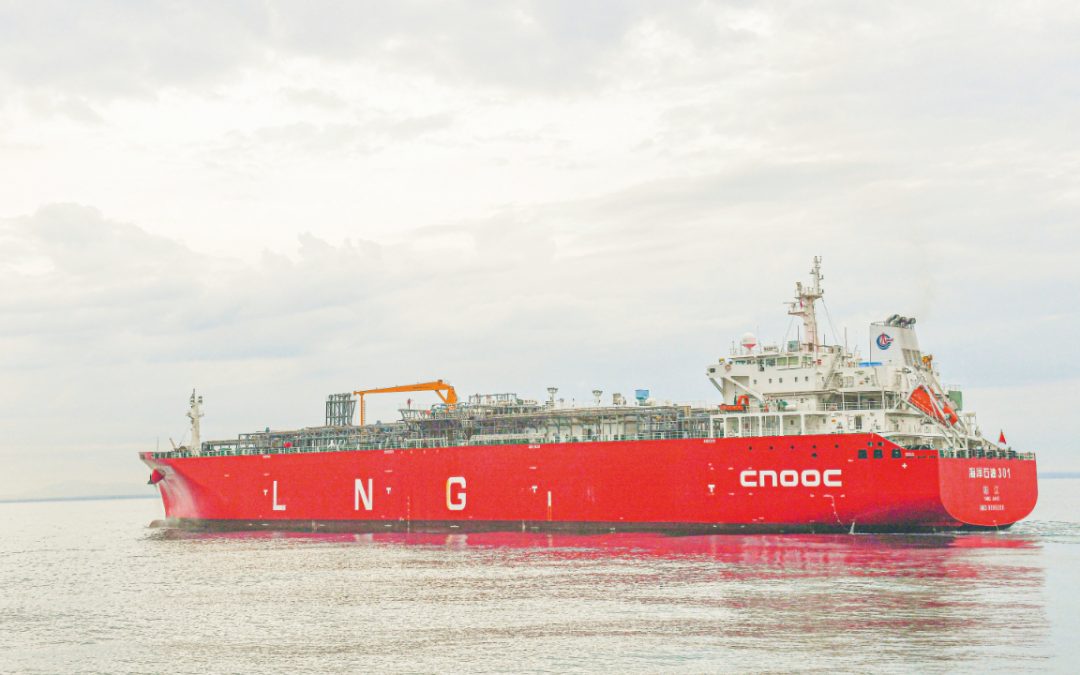Global LNG logistics company Atlantic Gulf & Pacific International Holdings hopes to start operations at its first Philippines LNG import terminal between March and May while aiming to expand its presence globally, President AG&P LNG Terminals and Logistics, Karthik Sathyamoorthy, said.
“We are going through a very interesting time within the LNG space … we are a demand creator [developing and building LNG terminals] to unlock demand in emerging economies,” Sathyamoorthy told S&P Global Commodity Insights in an interview, adding that within Asia, the company was advancing projects in India, Indonesia, and Vietnam.
Singapore-headquartered AG&P’s LNG import terminal in Philippines — PHLNG — is being commissioned in two phases and comes at a time when production at Malampaya, the country’s primary gas field, has been declining, making the development of the country’s LNG infrastructure more critical.
PHLNG, located at Batangas Bay, comes with a capacity of up to 5 million mt/year and is based on a floating storage unit — Ish — to be leased on a long-term basis with onshore storage and regasification facilities, Sathyamoorthy said.
In February 2022, AG&P said it had inked a long-term charter agreement with ADNOC Logistics and Services for the supply, operations, and maintenance of Ish — a 137,512 cu m FSU — to be chartered for 11 years with an option to extend by another four years.
The second phase of the PHLNG project comprises two onshore tanks of 60,000 cu m which are already under construction. Their integration with the main terminal was planned by mid-2025, Sathyamoorthy said.
The primary customer for PHLNG is the power sector and because the terminal sits adjacent to the Illijan power plant it will secure base load supplies for Illijan and likely beyond, Sathyamoorthy said.
“Because we have a customer committed to our capacity, we feel we are in the best place to continue to expand, provide additional supply and integrate demand downstream,” Sathyamoorthy said.
Penetrating India
“For us, after the Philippines, India is a corner key market for us and we have over the last five years invested significantly,” he said, noting the company already had a strong downstream infrastructure business in India after it won licenses for city gas distribution business in 12 geographical areas.
Traditionally, India’s demand primarily was led by gas-based power and gas to power always has a pricing issue because the alternative has always been coal and the affordability of LNG prices has always been questioned, Sathyamoorthy said.
However, a new set of demand is being created by city gas whereby LPG cylinders to households are being replaced by piped natural gas, he said.
The licensing regime for city gas over the past few years has meant that a license holder has committed to invest and develop infrastructure over the coming years, which is positive for the country’s gas demand prospects, he said, adding that AG&P itself has committed to close to $2 billion of capital investments over the next eight years.
“We are bullish about India’s demand story…so we also wanted to develop a terminal at Karaikal which we haven’t fully canceled or scrapped yet,” Sathyamoorthy said.
Karaikal LNG, to be owned and operated by AG&P was planned with an initial capacity of 1 million mt/year and was targeting to supply natural gas to power plants, industrial and commercial customers within a 300-km radius, the company said in February 2020.
In December 2021, AG&P said it had signed an agreement with ADNOC L&S to utilize Ghasha, an ADNOC L&S LNG carrier with a capacity of around 138,000 cu m, as an FSU for AG&P’s proposed LNG import terminal in India.
Pandemic-related curbs had led to a delay in the terminal’s development initially, Sathyamoorthy said.
However, the company was also contemplating alternative locations based on the spread of its city gas licenses to “strategically supply all of our city gas locations,” Sathyamoorthy said.
Selecting a geography with a potential longer-term growth for LNG demand in India was another consideration for exploring other locations, he said.
“In 2023, we will go ahead and finalize the terminal for which we want to go forward with the construction…By 2025, we should have an operating LNG terminal in India,” Sathyamoorthy said.
“We are looking at a 5 million mt/year terminal in India as well for AG&P and primarily we will use some part of that capacity for our own demand and use the terminal to on sell capacity to other demand holders as well.”
Global gas markets rebalancing
The supply side has gone through tremendous stress, resulting in elevated global LNG prices, Sathyamoorthy said.
For 2022, the Platts JKM averaged about $33.9789/MMBtu compared to $18.59543/MMBtu in 2021. The Platts West-India Marker averaged $31.8487/MMBtu in 2022 compared to an average of $17.37039/MMBtu in 2021.
Platts assessed the JKM for March at $19.244/MMBtu on Jan. 26.
From the beginning of 2023, prices have been softening somewhat from the highs seen over the past few months, Sathyamoorthy said.
“So, that gives us a clue that overall. The displacement of supply due to the Russia-Ukraine war, geopolitical issues, and sudden outages in some of the supply projects is balancing itself out while demand is also responding and adjusting itself,” he said.
“From our perspective, we see that slowly 2023 is year when the sector is going to get back on its feet and try to find a calming pace because what we saw in 2022 was a very short-term unsustainable market in terms of the pricing for spot LNG.”
Source: Hellenic Shipping News






